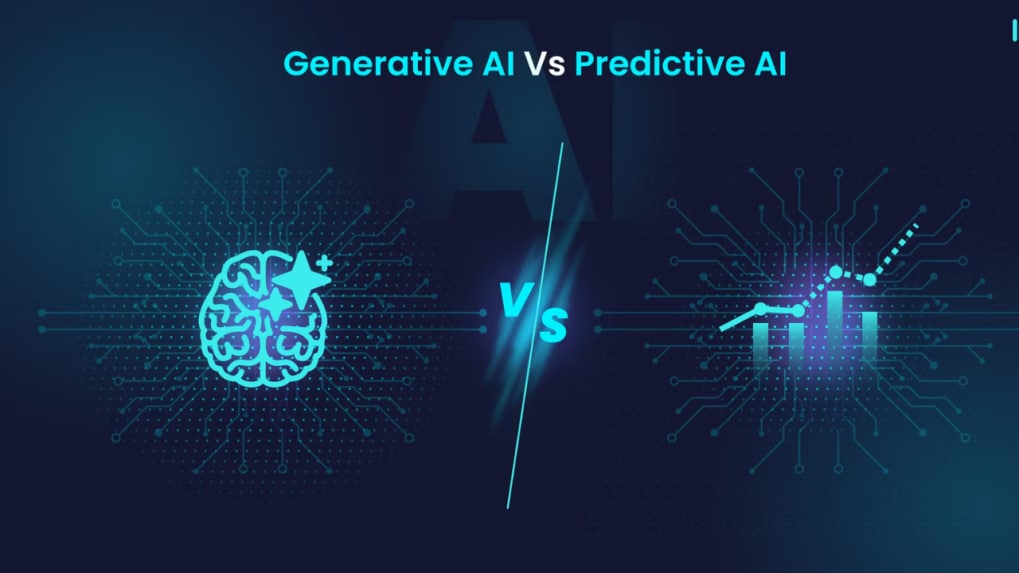Explained: Gen AI and Predictive AI, the difference, and why it matters today
Generative AI refers to systems that can create entirely new content—text, images, music, video, and even code. Think ChatGPT, DALL·E, Midjourney, or Sora.
ADVERTISEMENT
As artificial intelligence (AI) continues to redefine industries, two dominant subfields are often at the center of conversation—Generative AI and Predictive AI. Though they are frequently lumped together in tech discussions, the two are built for fundamentally different purposes. While one is rewriting how we create, the other is changing how we anticipate.
In an age where AI tools are being rapidly adopted in everything from media to medicine, understanding the distinction between Generative AI and Predictive AI isn’t just for tech experts—it's for marketers, strategists, policymakers, and everyday users navigating the new digital economy.
What Is Generative AI?
Generative AI refers to systems that can create entirely new content—text, images, music, video, and even code. Think ChatGPT, DALL·E, Midjourney, or Sora. These models are trained on large datasets and use deep learning (often transformer-based architectures) to generate outputs that mimic human creativity.
Use cases include:
Writing articles, emails, or social media posts
Designing product mockups and branding assets
Creating synthetic voices, avatars, and video content
Prototyping code or apps based on text prompts
What sets Gen AI apart is its ability to produce something novel, not just derive it from historical data. It's essentially a tool for creation, simulation, and ideation.
What Is Predictive AI?
Predictive AI, on the other hand, focuses on forecasting future outcomes based on existing data. It's the engine behind your Netflix recommendations, credit card fraud detection, and predictive maintenance in manufacturing.
It leverages techniques like regression models, decision trees, and neural networks trained on historical datasets to make statistically informed guesses.
Read More: Meta launches “Scam Se Bacho 2.0” taking anti‑scam education into public spaces
Common applications:
Predicting consumer behavior or sales trends
Flagging health risks or disease outbreaks
Estimating supply chain disruptions
Anticipating stock market movements or loan defaults
Predictive AI is less about creativity and more about probability. It’s a decision-support tool that helps organizations mitigate risk and optimise operations.
Despite their differences, the two can be—and often are—used together. For example, in advertising, predictive AI might forecast which campaigns will perform best in a certain demographic, while generative AI can then tailor and create the ad content in real time.
But the growing use of Gen AI has also raised concerns. Unlike Predictive AI, which often uses structured data and is traceable, Gen AI systems can hallucinate, plagiarise, or create biased or false content. That has opened up ethical, regulatory, and legal debates about its use in areas like journalism, politics, and education.
Read More: Bill Gates shares career advice for the AI era amid global layoffs
With the increasing reliance on AI across industries, distinguishing between types of intelligence becomes crucial. Businesses need to know whether they are implementing the right AI for the right job. Marketers and creators need to understand the limits and risks of Gen AI tools, while sectors like finance and healthcare need to trust the statistical rigor of Predictive AI systems.
As Gen AI steals the spotlight with its dazzling capabilities, Predictive AI remains the silent backbone of operational excellence. Understanding both is the key to not just surviving but thriving in the evolving AI landscape.

